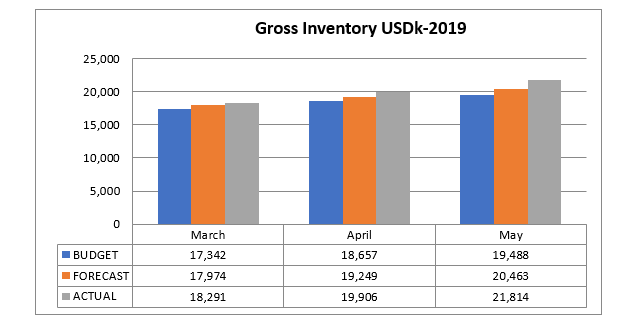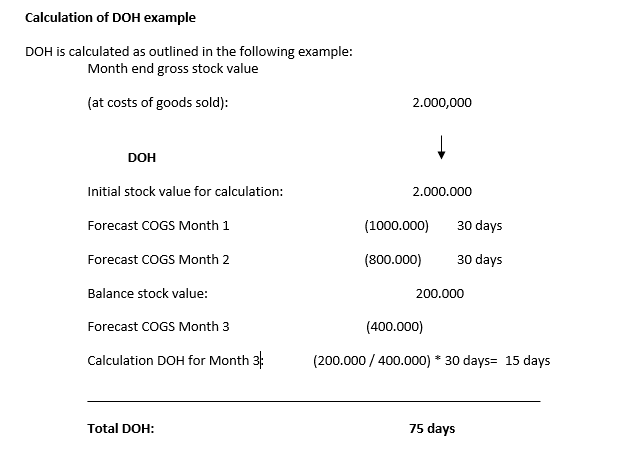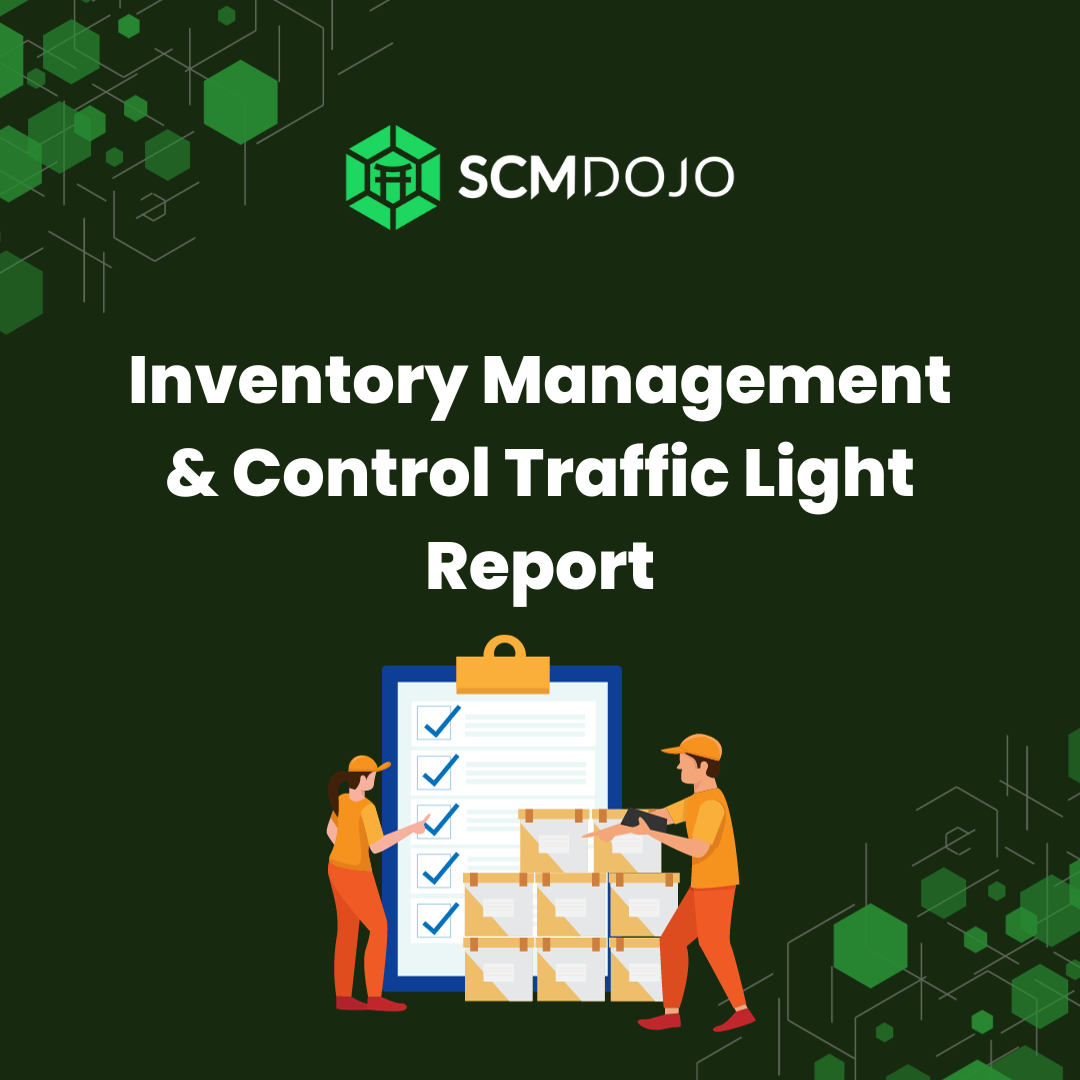Every business person understands that the essence of inventory in the running of a business is huge and should not be overlooked. The reason for this is that overlooking may lead to a number of challenges for a business. Such challenges vary from missed sales, high inventory carrying cost, warehouse space issues, poor customer delivery, and incremental costs to upset customers. All these challenges can be avoided by introducing appropriate inventory management KPIs.
Get Excess and Obsolete Inventory Policy
If you use correct key performance indicators (KPIs), it is easy to effectively manage your stock to ensure good cash flow, measure the impact of your inventory reduction actions, tactics, and strategies, as well as profitability. You should use the right KPIs to quantify how effective are your inventory management strategies.
You may be wondering why you should utilize the right Inventory Management KPIs. With these KPIs, you can make the best choices and plans towards the fruitful running of your business tasks. It would make it easy for you to enact and keep up with satisfactory deliveries, better consumer relationships, and lesser expenses.
In choosing the most suitable Inventory Management KPIs, you need to deliberately think about accessible alternatives. There are some interesting points before you settle on which inventory management KPIs will be increasingly pertinent to your business:
- Inventory management KPIs modify how you do your job or certain processes related to the supply chain. Therefore, you should carefully make your choice.
- Inventory management KPIs modify how you do your job or certain processes related to the supply chain. Therefore, you should carefully make your choice.
- Resist choosing Inventory Management KPIs that are too broad in range. Being too broad may not help you to effectively use them to promptly deliver insights into the various aspects of your business where you need to handle properly.
- While it seems easy to choose Inventory Management KPIs that reflect efficiency, it is usually pretty difficult to select those that reflect increases in the level of effectiveness. However, you should go for the latter, which is more relevant to your business.[ See The Role Of Effectiveness & Efficiency in Supply Chain Optimization]
- Watch out for vain Inventory Management KPIs. This kind of KPIs makes a particular department or process appear good, yet it doesn’t deliver any form of insights into how to ensure the effectiveness of inventory management, production processing, or supply chain.
- Stock Inventory Management KPIs should reflect your company’s strategic goals and how those goals are being achieved.
- You should try to lessen or remove any kind of Inventory Management KPIs that creates competition among departments within your company. It is best to go for the ones that promote collaboration.
- For any inventory system, you select, always ensure that you can configure the Inventory Management KPIs dashboard easily to suit your business needs.
To fully comprehend and a business activity is performing, you need to start measuring KPIs for such an activity. Regarding inventory management, there are a number of Inventory Management KPIs worth considering. Since every business is different in a way, you have to determine which KPI seems most appropriate to you and is most relevant to your business.
In this article, we will tell you the seven (7) rock-solid Inventory Management KPIs for successful inventory management.
Inventory Management KPIs Are:
Gross Inventory
Gross Inventory functions almost like absolute inventory, which is the actual cost of the merchandise, materials and items bought or gained by your business to create products for the consumers. Gross inventory means the cost of all stock decided on a first-in-first-out premise either under the retail or average cost technique. Simply put Gross Inventory Formula:
Gross Inventory = Number of units/quantity per SKU x Cost/Standard Cost of SKU
The best way to manage Gross inventory to learn and master all available Inventory Planning Methods.
To help supply chain community I have written a detailed Guide to Inventory Planning Methods. The objective of this guide is to describe the present use, application and characteristic of selecting various inventory planning methods, and to explain how the methods are applied by the supply chain professionals.
This guide would be considering five Inventory Planning Methods which includes:
- Kanban Kanban
- Run-out time
- Re-order points
- Fixed Order Interval
- Material Requirement Planning (MRP)
Most of the Inventory Planning methods can be used in manufacturing as well as in the distribution industry.
This Inventory Management KPI should be presented in a simple graph as shown below comparing Actual Gross Inventory vs Inventory Forecast vs Inventory Budget
Previously, the average stock was simply the average of beginning and ending inventory. However, I would advise utilizing gross inventory rather than net inventory (considering the valuation allowance).
Net Inventory
Net inventory entails the total inventory without allowances for reserve inventory and assigned goods. That is, net inventory is what you have available on sales. For reserve inventory, this is an allowance made available for missing, outdated, and spoilt items, which have lost their value and cannot be sold. You can also exclude from net inventory the value of goods assigned to promotional events or allocated for certain customers.
In my time as a supply chain manager, I have not focused much on reporting net inventory as the difference is negligible in presenting Gross Inventory and Net Inventory
Days on Hand (DOH)
This KPI is essential for examining the number of times an inventory has been sold and substituted within a precise period.
According to the Corporate Finance Institute “Days of Inventory on Hand (DOH) is a metric used to determine how quickly a company utilizes the average inventory available at its disposal. It is also known as days inventory outstanding (DIO)” . In other words: Time required to convert inventory into sales. Generally: The lower the better, unless the ability to fill customer orders drops to an unacceptable level.
The Days on Hand KPI is calculated by taking the Cost of Good Sold (COGS) into account. It consists of the average stock, COGS, and number of days.
The Days of Inventory on Hand figure is computed by taking the COGS into account. More specifically, it consists of the average stock, COGS, and number of days. The formula is given as:
Days on Hand (DOH) = Average Inventor / (cost of sales/ number of days)
DOH is calculated as outlined in the following example:
In my experience, Gross Inventory and DOH are the two most important metrics you should focus on for Inventory Management and Control. It does get difficult to have DOH as KPI for Raw Material or WIP or other subsets of inventory, so just focus on DOH as overall inventory number and KPI.
Inventory Turns
Inventory Turns, or Inventory turnover is used to measure the number of times items are sold and substituted over a precise period.
A good definition is written by Susan Randall in CIPS Knowledge Paper as
“This ratio measures how many times a company’s inventory has been sold (turned over) during a period of time. The cost of goods sold divided by the average level of inventory on hand is the key metric. Operationally, inventory turns are measured as total throughput divided by the average level of inventory for a given period, often measured annually”
This is usually done on a yearly basis. There is a high turnover when the items are moving off the shelves as fast as possible, and the number of sales is high. If there is low inventory turns, this can suggest that your business has excess inventory and you should think about lessening the number of orders to save on the costs of carrying or appraising various items. If you want to assess inventory turnover, simply find the average number of days to sell. Doing this presents you with the length of time it takes to sell a product on average and the number of days’ worth of sales is present in the inventory.
When there is a low average-day-to-sell, this can be seen often as a positive sign but can lead to the issue of stock-outs, affecting the experience of customers. Also, higher average-days-to-sell can be seen as overstocking and wasted warehouse or shelf/storage space.
There is a formula, which is:
Inventory turnover = Cost of Goods Sold ÷ Average Inventory
Inventory Aging
Also known as the Average Age of Inventory, this Inventory Management KPI is an important one. When I do Inventory Optimisation Modelling Inventory Aging is an important KPI to show, how much inventory has Reached of Stock (ROS) less than 3 months, and which are endless.
It represents how many days it took to sell an item. Usually, this is calculated by dividing the cost of inventory by the cost of the sold goods. This will then be multiplied by 365 for the yearly score. The older your inventory, the more the costs, and the more you can discover if your items are properly priced or not.
Remember that the Average Age of Inventory can differ widely across businesses or items. For example, Christmas decorations can still be sold in the following year, but it will still cost you to store it in your warehouse or storage space. Aging inventory can become a high cost for consumer electronics, which demand regular new versions and the need to stay updated with the trend. In retail, if the age of inventory is beyond 120 days, you have to think about lessening the price (markdown), adding it with other available products or selling it off at probably a low cost to distributors.
Below is the example of where Reach of Stock for more than 50% of the inventory is more than 18 months. This Inventory Management KPI drives the focus on those SKU and required special inventory reduction strategies.
Dead or Obsolete Inventory
Inventory obsolescence is inventoried that are unsellable and valueless. It is defined as inventory that has stretched past its useful life as a finished product.
In other words, if you hold an inventory for too long, it will more likely become outdated or damaged beyond any repair. In any case, the loss is often huge. Therefore, it is necessary for you to track the value of your outdated inventory. You can do this monthly or quarterly. The best way is to use deploy GUIDE TO EXCESS AND OBSOLETE INVENTORY POLICY which outline
This Excess and Obsolete Inventory Policy Guide helps you proactively identifying, accounting for and resolving the disposition of excess and obsolete inventory. Also to assign the proper accountability for continuous improvement activities focused on reducing the occurrence of excess and obsolete inventory by identifying and addressing the related root causes
You can use the sales cycle of each item to ascertain when it has become outdated. In the event that the sales cycle is usually within a week, and there are suddenly no sales for a month, then that is a strong sign that the item is becoming obsolete, and you have to release such an item immediately to cut loss.
Excess Inventory
Excess inventory is the outcome of poor management of material flow or stock demand. Excessive Inventory is also linked with revenue loss, and it remains a threat to your business bottom line.
Excessive Inventory levels feature various cost considerations that include revenue loss from products with less demand and costs associated with storing inventory (carrying costs). These costs add up rapidly across many factors. If not managed appropriately, the best case for any business is to sell off excess stock to break even and only lose a small percentage of profit.
There are different approaches to precisely detect excess inventory with reserve recorded together with forecasted demand. The total for any excess inventory should be determined yearly and an entry logged at year-end to regulate any excess inventory grant. The Excess Inventory Allowance should equal 50% as a minimum for excess inventory.
The above Excess and Obsolete Stocks is also mentioned as Slow Moving and Obsolete Stock.
I have created an Inventory Planning Package which includes both Excess & Obsolete Inventory Policy & Ultimate Inventory Planning Guide, which you can get by clicking the below button.
Distinguishing the correct Inventory Management KPIs is essential to enhancing the control of your inventory. You also need to have what is needed for perfect, precise information, which is a significant piece of any inventory control.
There are various KPIs that you can choose to adopt for running your business. In this article, the focus has been on the significant KPIs for effective inventory control. The list of KPIs is simply a great start on which inventory management KPIs you can choose for your inventory. Nevertheless, it is left to you to figure out which ones will make your tasks increasingly proficient while keeping your customers cheerful.
In all, realizing which Inventory Management KPIs to focus on and understanding what they mean is essential to successfully deal with your stock. In the event that you are not presently reporting and following your inventory KPIs on a regular basis, your competitors likely have an edge over you.
Therefore, start observing now. Remember that you need not utilize all the KPIs on the go. Contingent on your needs, pick the KPIs that fit well for your business tasks. In the event that you are new at this, then pick a basic KPI. It will assist you in seeing how well your stock is performing. Checking these KPIs is exceptionally useful as it would empower you to perceive patterns that will assist you in making relevant decisions and plans that will upgrade the entire inventory management framework.
If you are using any other Inventory Management KPIs which I have not mentioned here, please do mention that in comments sections below
Reference:
About the Author- Dr Muddassir Ahmed
Dr MuddassirAhmed is the Founder & CEO of SCMDOJO. He is a global speaker, vlogger and supply chain industry expert with 17 years of experience in the Manufacturing Industry in the UK, Europe, the Middle East and South East Asia in various Supply Chain leadership roles. Dr. Muddassir has received a PhD in Management Science from Lancaster University Management School. Muddassir is a Six Sigma black belt and founded the leading supply chain platform SCMDOJO to enable supply chain professionals and teams to thrive by providing best-in-class knowledge content, tools and access to experts.
You can follow him on LinkedIn, Facebook, Twitter or Instagram
CIPS Knowledge Paper by Susan Randall – https://www.cips.org/Documents/Knowledge/Procurement-Topics-and-Skills/Members%20only%20content/Stocktaking%20and%20inventory%20measurement%20as%20a%20means%20to%20improve%20profitability%20-%20Susan%20Randall.pdf









